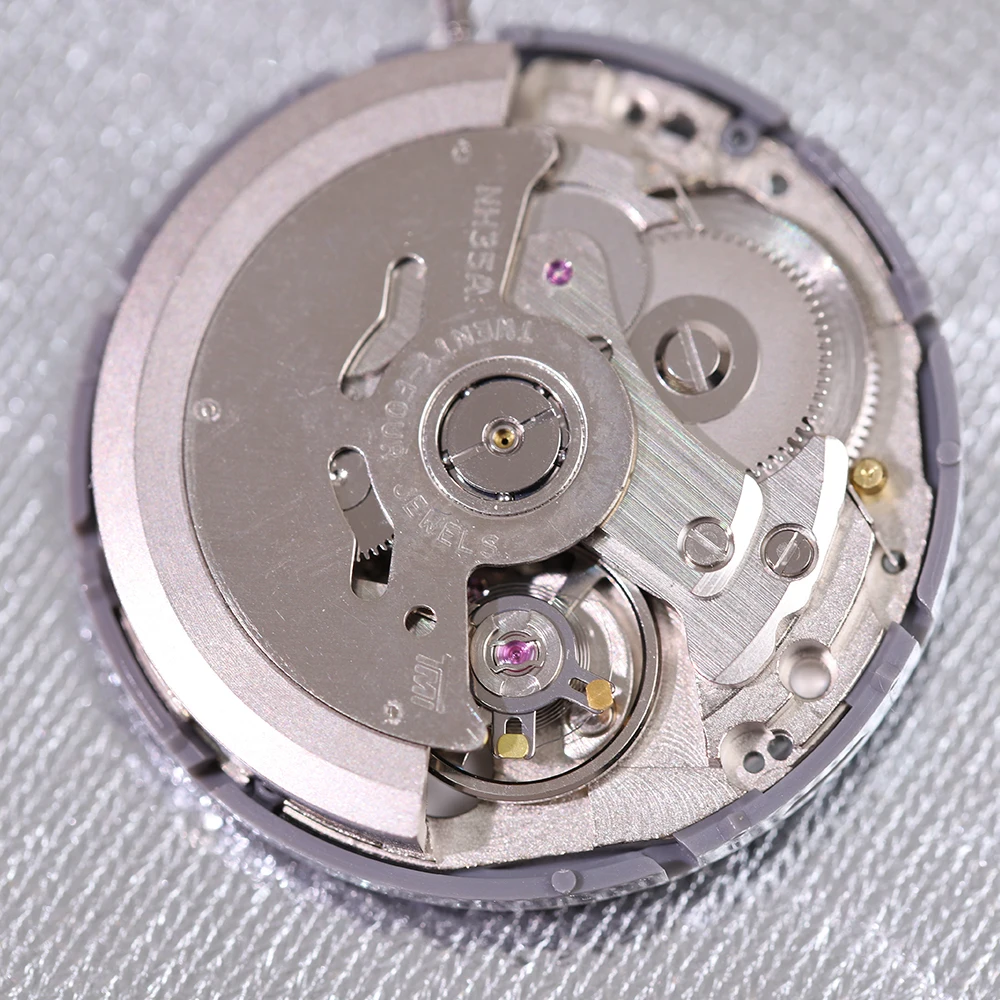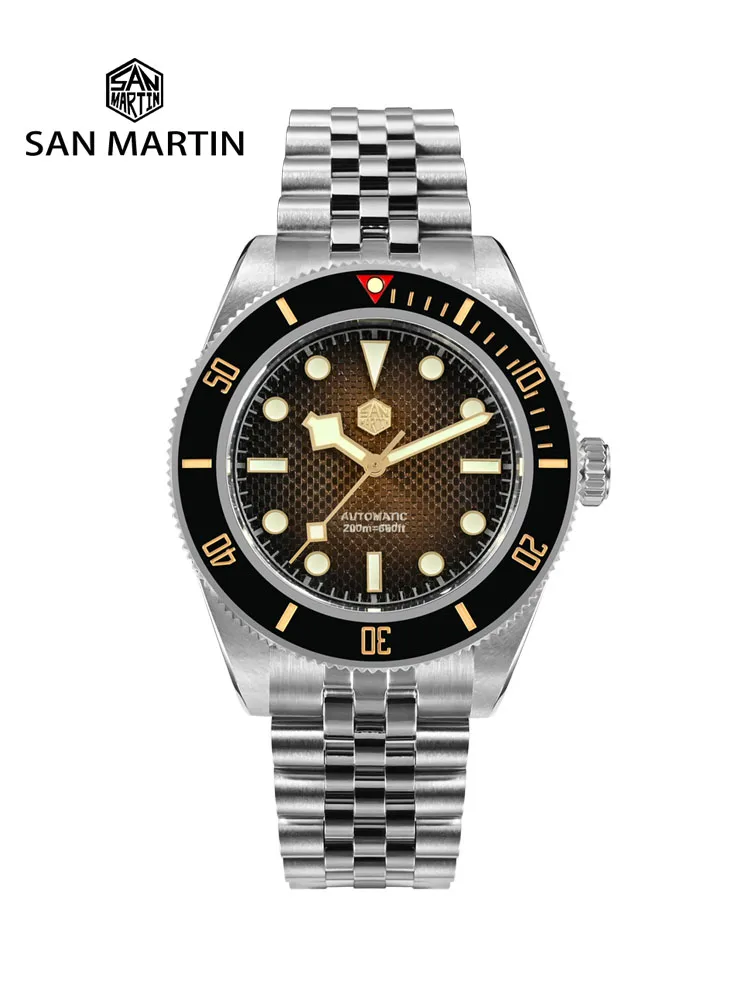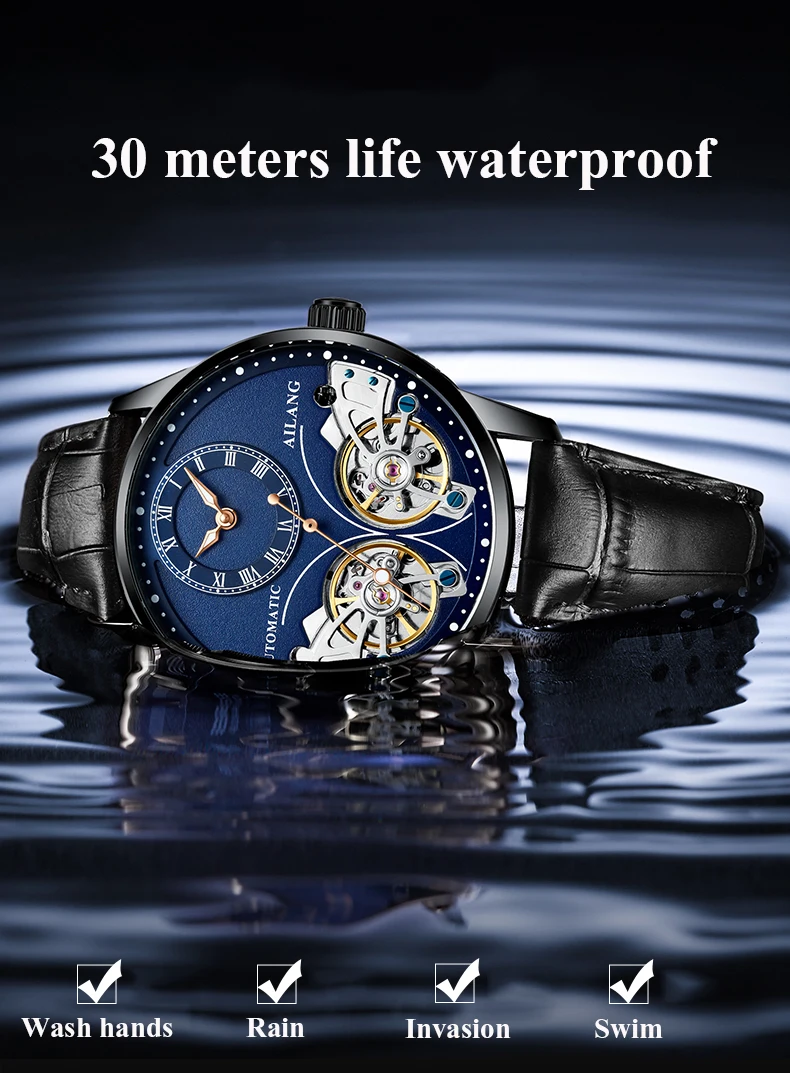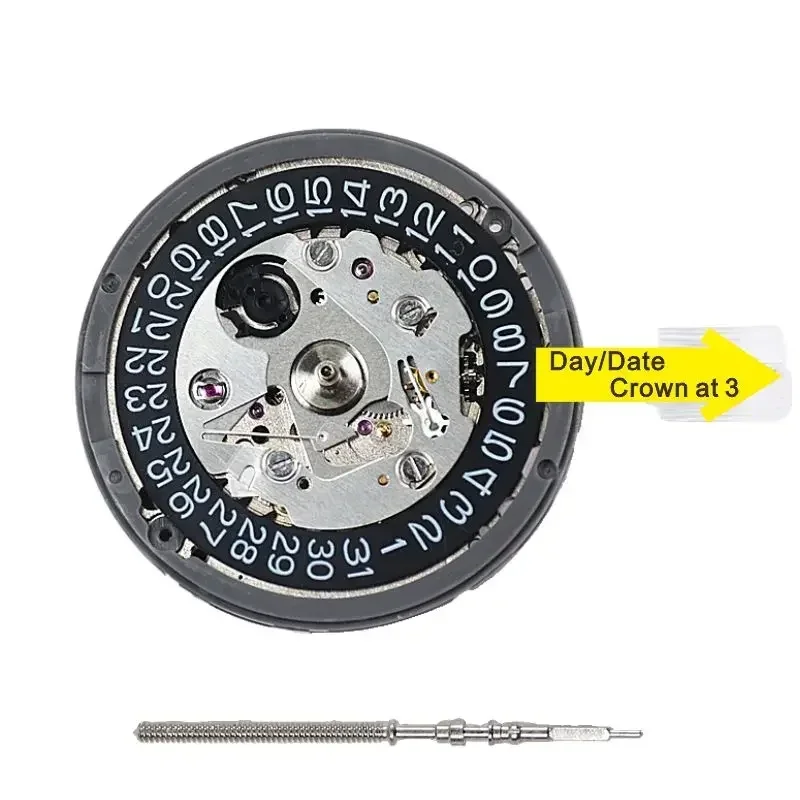Understanding Automatic Day-Date Watches: Form Meets Function
Automatic watches represent the perfect marriage of traditional craftsmanship and practical functionality. Unlike quartz watches that rely on batteries, automatic timepieces harness the natural motion of your wrist to power themselves. This self-winding mechanism, with origins dating back to the 18th century, creates a living connection between the wearer and their timepiece.
When this reliable automatic movement combines with day and date complications, the result is a watch that offers genuine practical value. The day-date function displays both the current day of the week and the numerical date, providing at-a-glance access to essential information during daily life. This seemingly simple addition requires intricate engineering to ensure that both displays change correctly at midnight, often with a satisfying “click” that watch enthusiasts cherish.
The combination of these features represents watchmaking at its most purposeful. While smartwatches might offer more functions, they lack the mechanical artistry and timeless appeal of an automatic day-date watch. Each component is meticulously crafted and assembled by skilled watchmakers who honor centuries of horological engineering developments through their work.
What makes these watches particularly special is how they deliver practical information without requiring batteries or charging. By harnessing kinetic energy from natural arm movements, they continue functioning reliably for decades when properly maintained. The sophisticated mechanics behind how day-date automatic watches work reveal the incredible ingenuity that watchmakers employ to create these functional works of art.
The Mechanics Behind Automatic Movements with Day-Date Functions
Understanding the mechanical wizardry inside an automatic day-date watch helps appreciate what makes these timepieces special. At their core, automatic watches operate through a carefully orchestrated system of components working in harmony:
The self-winding mechanism begins with the rotor – a semicircular weight that swings freely as your wrist moves. This motion winds the mainspring, which stores energy like a tightly coiled ribbon. The mainspring gradually releases this energy through the gear train, which transfers power to the escapement. This regulated release of energy creates the familiar “tick” of a mechanical watch while driving the hands around the dial.
The day-date complication adds another layer of mechanical complexity. These functions typically involve:
- Date wheel: A disk with 31 numbers that rotates once per day
- Day wheel: A disk or wheel with the seven days of the week
- Switching mechanism: Gears that advance both displays at midnight
- Quick-set features: Allows adjustment without rotating the hands through 24-hour cycles
Different movements handle these functions in various ways. Common automatic movements with day-date capabilities include the workhorse ETA 2824-2 and its equivalents like the Sellita SW200, as well as the reliable Miyota 9015. These movements typically offer power reserves of 36-80 hours, meaning they’ll continue running that long without being worn.
What makes the day-date function particularly impressive is how the mechanism “knows” when to change both displays. Around midnight, a series of levers and springs engage with the date and day wheels, pushing them forward precisely when needed. Better-quality movements accomplish this changeover crisply and quickly, while lower-quality ones might gradually change over several hours.
The practical advantage of quick-set features cannot be overstated. These allow you to adjust the day and date displays by simply pulling the crown to specific positions and turning it, rather than cycling the hands through multiple 24-hour periods. This innovation makes the watch much more user-friendly, especially when switching between watches or after a period of non-use.
Understanding the expected longevity of automatic watches helps you appreciate the value these mechanical marvels offer over time.
Key Quality Indicators in Day-Date Automatic Watches
When evaluating the quality of automatic watches with day-date functions, several key indicators help distinguish exceptional timepieces from merely adequate ones. These quality markers manifest throughout various aspects of the watch.
Movement Quality
The heart of any automatic watch is its movement, and several factors indicate superior craftsmanship:
- Beats per hour (BPH): Higher frequencies (28,800 BPH vs. 21,600 BPH) generally offer better timekeeping precision
- Jewel count: Quality movements use synthetic rubies (typically 21-26 jewels) as bearings to reduce friction at pivot points
- Movement finishing: Higher-end watches feature decorative touches like Geneva stripes, blued screws, and perlage (circular graining)
- Regulation: Premium movements are adjusted in multiple positions to maintain accuracy regardless of how the watch is worn
Case Construction
The watch case serves as both protective housing and design statement. Quality indicators include:
- Precision of machining with tight tolerances between components
- Clean transitions between polished and brushed surfaces
- Solid feel when operating the crown and pushers
- Even application of finishing techniques without visible flaws
- Secure caseback sealing to maintain water resistance

Day-Date Display Quality
The calendar display itself reveals much about a watch’s quality:
- Perfect alignment of date numbers within the window
- Crisp, clean printing on both day and date wheels
- Consistent spacing between all numerals and letters
- Smooth transition at midnight without sticking or partial displays
- Proper sizing of windows relative to the information displayed
Accuracy expectations vary significantly between movement grades. Standard automatic movements typically maintain -15/+25 seconds per day accuracy, while COSC-certified chronometers must achieve -4/+6 seconds daily variation. This precision comes from higher-quality components and more careful adjustment during manufacture.
For those interested in exploring additional options, our comprehensive guide to watch features provides deeper insight into the various complications available in modern timepieces.
Essential Day-Date Watch Specifications to Consider
When shopping for an automatic day-date watch, several key specifications determine its durability, comfort, and overall quality. Understanding these factors helps you make an informed decision aligned with your needs and preferences.
Case Materials
The watch case material significantly impacts durability, weight, and appearance:
- Stainless Steel: The most common option, typically using 316L grade for its corrosion resistance. Higher-end pieces might use 904L steel, offering superior corrosion resistance but at a higher cost.
- Titanium: Approximately 40% lighter than steel with excellent strength and hypoallergenic properties, though more prone to scratching.
- Gold and Gold-Tone: From solid gold to gold-plated or PVD-coated options, these provide a luxurious appearance with varying durability.
- Bronze: Develops a unique patina over time, appealing to those seeking a personalized aging process.
Crystal Types
The crystal protects the dial while affecting readability and scratch resistance:
- Sapphire: Rating 9 on the Mohs hardness scale (diamonds are 10), providing superior scratch resistance but more expensive.
- Mineral: Hardened glass that offers reasonable durability at a moderate price point.
- Acrylic: Most affordable and shatter-resistant but scratches easily (though scratches can be polished out).
Water Resistance
Water resistance ratings indicate the watch’s ability to withstand moisture:
- 30m (3 ATM): Splash resistant but not suitable for swimming
- 50m (5 ATM): Brief swimming but not for snorkeling or diving
- 100m (10 ATM): Suitable for recreational swimming and snorkeling
- 200m+ (20+ ATM): Appropriate for most water activities including diving
Day Display Languages
Many day-date watches offer multiple language options for the day display:
- Bilingual wheels with alternating languages (English/Spanish, English/French)
- Quick-change functionality for switching between language options
- Single-language displays in markets specific to certain regions
For those ready to explore specific models, our collection of day-date automatic watches showcases various implementations of these specifications across different styles and price points.
Price Tiers and What to Expect at Each Level
The world of automatic day-date watches spans a wide range of price points, each offering distinct quality characteristics and features. Understanding what each price tier delivers helps you make an informed purchasing decision aligned with your expectations and budget.
Entry-Level Automatic Day-Date Watches ($200-500)
At this price point, you can expect:
– Reliable Japanese or Chinese automatic movements
– Mineral crystal glass
– Basic water resistance (typically 30-50m)
– Standard stainless steel cases with simpler finishing
– Functional day-date displays that may lack quick-set features
– Limited or basic adjustment from the factory
These watches offer the authentic mechanical experience and day-date functionality without breaking the bank. While they may not have the refinement of higher-end pieces, they deliver solid performance and can serve as excellent gateway pieces into the world of automatic watches.
Mid-Range Options ($500-1500)
Moving up to this tier provides notable improvements:
– Higher-grade movements with better accuracy and smoother operation
– Sapphire crystals becoming standard
– Enhanced water resistance (100m+)
– Better case finishing with more attention to detail
– Improved dial quality with applied indices and better lume
– More reliable day-date mechanisms with smoother transitions
– Quick-set features for easy adjustment
This range represents the sweet spot for many enthusiasts, offering significant quality improvements over entry-level pieces while remaining relatively accessible. Watches in this category often strike an excellent balance between quality, features, and value.
Luxury Segment ($1500+)
At luxury price points, expect:
– Premium movements with higher accuracy and better finishing
– Enhanced durability and longevity
– Superior case materials and construction
– Meticulous attention to detail in every component
– Perfect alignment and operation of the day-date function
– Brand heritage and prestige
– More unique designs and exclusive features
The luxury tier offers refinement in every aspect, from the smoothness of the crown operation to the precise alignment of the day-date windows. The quality differences become more subtle but are apparent to those who appreciate fine watchmaking.
For a wider perspective on automatic timepieces across various price points and styles, browse our comprehensive automatic watches collection to find the perfect match for your preferences and budget.
The “Danger Zone”: Proper Care When Setting Day-Date Functions
One of the most critical aspects of owning an automatic day-date watch is understanding how to safely set its calendar functions. Improper adjustment can potentially damage the delicate internal mechanism, leading to costly repairs.
The “danger zone” refers to the period between approximately 9 PM and 3 AM when the day and date changing mechanism is actively engaged. During these hours, the calendar gears are in mesh and preparing to advance the displays. Manually adjusting the date or day during this time can cause excessive stress on these components, potentially bending or breaking the small teeth on the calendar wheels.
To safely set your day-date watch, follow these steps:
- First, determine if your watch is currently in the danger zone by checking the time.
- If it’s between 9 PM and 3 AM, rotate the hands past this period (typically forward) until you’re safely in daylight hours.
- Once outside the danger zone, pull the crown to the first position to adjust the date.
- Pull to the second position (if available) to adjust the day.
- If your watch doesn’t have quick-set features, you’ll need to rotate the hands through complete 24-hour cycles to advance the calendar displays.
- After setting the day and date, adjust the time, being mindful to correctly set AM/PM by tracking a full rotation if needed.
- Push the crown back to its normal position and give it a gentle twist to ensure it’s secure.
Signs that the date mechanism might be damaged include:
– Calendar displays that don’t fully advance
– Dates that get stuck between numbers
– Unusual resistance when adjusting settings
– Day display that shows half of two different days
Understanding these procedures ensures your watch will continue operating properly for years to come. This knowledge forms the foundation for the broader maintenance practices discussed in the next section.
Long-Term Care and Maintenance of Automatic Day-Date Watches
Proper maintenance is essential for ensuring your automatic day-date watch provides decades of reliable service. These mechanical timepieces require periodic care to maintain their accuracy and functionality.
Regular service intervals typically fall between 5-7 years, depending on the watch’s complexity and usage conditions. During a professional service, the watchmaker will disassemble the movement, clean all components, replace worn parts, lubricate appropriate points, and regulate the timing. Day-date mechanisms receive special attention to ensure smooth operation of the calendar functions.

For daily care, consider these essential practices:
- Wind your watch regularly if not worn to maintain power reserve
- Store unworn watches in a watch box or case away from moisture and magnetic fields
- Avoid exposing the watch to extreme temperatures or shock
- Clean the case and bracelet occasionally with a soft cloth
- Have the water resistance checked annually if you frequently expose the watch to water
When storing a watch for extended periods, consider these options:
– Allow it to wind down naturally and reset it when ready to wear
– Use a watch winder set to the appropriate turns per day (TPD) for your specific movement
– If using a winder, ensure it rotates in the correct direction for your watch
Signs that service might be needed include:
– Decreasing accuracy or erratic timekeeping
– The day or date failing to change properly
– Moisture appearing under the crystal
– The crown becoming difficult to operate
For watches with exhibition casebacks, our automatic skeleton watches collection showcases the beautiful mechanics visible through transparent windows, allowing you to appreciate the craftsmanship while also monitoring the movement’s condition.
Buying Guide: Where and How to Purchase Your Day-Date Automatic
Finding the perfect automatic day-date watch involves knowing not just what to buy, but where and how to make your purchase. This knowledge helps ensure authenticity, value, and satisfaction with your investment.
When evaluating purchase options, consider these key factors:
Authorized Dealers vs. Grey Market
Authorized dealers offer manufacturer warranties and guaranteed authenticity but often at full retail price. Grey market retailers may offer significant discounts but typically provide their own warranty rather than the manufacturer’s. Both options have merit depending on your priorities regarding price and official support.
In-Person Evaluation Checklist
When examining a watch in person, check:
– Day-date alignment within their windows
– Smooth crown operation when setting functions
– Proper hand alignment (especially at 12 o’clock position)
– Case and bracelet finishing for any defects
– Secure bracelet or strap attachment
– Crisp clicking if the watch has a rotating bezel
– Proper documentation and packaging
Online Purchase Considerations
When buying online:
– Research the seller’s reputation and return policy
– Verify authenticity guarantees and warranty terms
– Request additional photos of specific details if needed
– Understand shipping insurance and customs implications for international purchases
– Check if the watch is “new old stock” or truly new
Authentication Tips
For pre-owned watches, verify:
– Serial number consistency across the watch and documentation
– Movement finishing matches the expected quality for the brand
– Weight matches specifications (counterfeit watches are often lighter)
– Quality of printing on the dial (fuzzy printing often indicates counterfeits)
– Proper functioning of all complications
For those interested in watches with additional functionality beyond day-date features, exploring GMT automatic watches provides options for tracking multiple time zones alongside calendar functions.
Classic Automatic Dress Watches, Day Date Automatic Watches, Perpetual Calendar Automatic Watches
Price range: $540.60 through $574.60 Select options This product has multiple variants. The options may be chosen on the product pageAutomatic Chronograph Watches, Chronograph Pilot Watches
Price range: $233.36 through $237.58 Select options This product has multiple variants. The options may be chosen on the product pageClassic Automatic Dress Watches, GMT Automatic Watches, GMT Pilot Watches
Price range: $1,240.86 through $1,463.33 Select options This product has multiple variants. The options may be chosen on the product pageAutomatic Chronograph Watches, Classic Style Dive Watches
$3,053.06 Select options This product has multiple variants. The options may be chosen on the product pageAutomatic Skeleton Watches, Open Heart Automatic Watches
$98.36 Select options This product has multiple variants. The options may be chosen on the product pageBronze Automatic Watches, Military Inspired Automatic Watches, Professional Spec Dive Watches
Price range: $1,442.21 through $1,442.82 Select options This product has multiple variants. The options may be chosen on the product page
Top Automatic Day-Date Watches By Style Category
Automatic watches with day-date functions span a wide range of styles, each offering distinct aesthetic and practical characteristics. Finding the right style category for your needs helps narrow your search to watches that will integrate seamlessly with your lifestyle and wardrobe.
Dress Watches with Day-Date Functions
Dress day-date watches prioritize elegance and refinement, featuring:
– Slimmer case profiles (typically under 12mm)
– Clean dials with minimal text and simple indices
– Restrained day-date windows that integrate harmoniously with the dial
– Leather straps or slim bracelets
– Moderate water resistance (30-50m)
These watches excel in formal and business settings, sliding easily under shirt cuffs while providing practical calendar information.
Sports/Dive Watches with Day-Date Displays
Sports and dive watches combine robust construction with day-date functionality:
– Stronger water resistance (200m+)
– Unidirectional rotating bezels
– Highly legible dials with luminous markers
– Day-date displays that maintain readability in various conditions
– Durable bracelets or rubber straps
– Reinforced crown systems
These watches offer practical calendar functions without sacrificing durability for active lifestyles and water activities.
Field/Military-Inspired Day-Date Watches
Drawing inspiration from military timepieces, these watches feature:
– Highly legible dials with 12/24-hour markings
– Robust cases with practical finishes
– Day-date displays designed for quick reference
– Canvas, nylon, or leather straps
– Scratch-resistant crystals
– Excellent low-light visibility
These watches blend heritage styling with practical functionality for everyday wear in various conditions.

Contemporary/Modern Day-Date Designs
Modern interpretations of day-date watches push design boundaries:
– Innovative case shapes and materials
– Unique dial layouts and color combinations
– Creative placement of day-date windows
– Integration with minimalist or industrial design aesthetics
– Experimental straps and bracelets
These watches appeal to those seeking distinctive timepieces that stand apart from traditional designs.
Vintage-Inspired Day-Date Timepieces
Capturing the essence of past eras, vintage-inspired models offer:
– Nostalgic design elements from specific decades
– Domed crystals reminiscent of acrylic
– Warm color palettes with faux patina
– Period-correct proportions and detailing
– Modern movements in heritage-styled cases
These watches connect wearers to the rich evolution of dive watch technology and other historical timepiece categories while providing reliable contemporary performance.
Beyond Day-Date: Additional Complications to Consider
While day-date functions provide excellent utility, many enthusiasts eventually seek watches that offer additional complications. These extra features complement the day-date functionality while adding new dimensions of practicality and horological interest.
Power Reserve Indicators
This useful complication shows how much running time remains before the watch needs winding:
– Typically displayed on a small subdial with a gauge showing hours remaining
– Particularly useful for watches with longer power reserves (72+ hours)
– Helps prevent the watch from stopping unexpectedly
– Adds visual interest to the dial while providing practical information
GMT/Dual Time Functions
For frequent travelers or those working with international colleagues:
– Displays a second time zone alongside the local time
– Usually implemented with an additional hand circling the dial once every 24 hours
– Complements day-date functions by providing complete temporal awareness
– Particularly useful for scheduling calls across time zones
Chronograph Functions
These stopwatch features pair nicely with day-date displays:
– Allow timing events while maintaining calendar awareness
– Usually implemented with additional subdials and pushers
– Range from simple elapsed time measurement to complex split-time functions
– Add significant visual complexity and mechanical interest
Moon Phase Complications
This traditional complication shows the current lunar phase:
– Displays the moon’s appearance through a small aperture on the dial
– Cycles through new moon to full moon approximately every 29.5 days
– Adds classical horological character to day-date watches
– Creates connection to the astronomical basis of our calendar system
These additional complications significantly increase movement complexity, which affects both price and maintenance considerations. Servicing costs typically rise with complication count, and accuracy can be more challenging to maintain in highly complex movements.
For those interested in the ultimate expression of calendar complications, our perpetual calendar automatic watches collection showcases timepieces that automatically adjust for months of different lengths and even leap years.
Common Questions About Automatic Day-Date Watches
How accurate are automatic day-date watches compared to quartz?
Automatic watches typically maintain accuracy within -15 to +25 seconds per day, while standard quartz watches vary by about 15 seconds per month. Higher-grade automatic movements can achieve better precision, but won’t match quartz accuracy. However, many enthusiasts appreciate this characteristic as part of the mechanical charm.
What happens if I don’t wear my automatic watch on weekends?
Most automatic watches have power reserves between 38-80 hours. If unworn beyond this period, the watch will stop and require resetting of time and date functions. For longer storage, consider a watch winder or simply plan to reset the watch when you wear it next.
Are day-date watches less water-resistant than simpler models?
Not necessarily. While additional case penetrations (like pushers) can create water resistance challenges, properly designed day-date watches maintain their stated water resistance ratings. However, always verify the specific rating of your watch before water exposure.
Can I change the language on my day-date watch?
Many day-date watches feature bilingual day wheels, typically with English and another language (often Spanish, French, or German). Changing between languages usually involves cycling through all seven days. Some watches offer quick-change functionality, while others require going through a full week cycle.
How does magnetism affect day-date functions?
Magnetic fields can affect the balance spring of automatic watches, causing them to run fast. While the day-date mechanism itself isn’t directly affected by magnetization, the timing disruption can impact the synchronization of date changes at midnight. Modern watches increasingly incorporate antimagnetic components to mitigate these effects.
Matching Your Lifestyle to the Right Day-Date Watch
Finding the perfect automatic day-date watch involves matching your daily activities and preferences to the right timepiece. Different lifestyles place varying demands on a watch, making certain features more valuable depending on your routine.
For office professionals, consider these factors:
– Dress watches with day-date functions easily slip under shirt cuffs
– Clear day displays help track meeting schedules
– Models with sapphire crystals resist desk diving scratches
– Watches with longer power reserves accommodate weekend storage
Active individuals should look for:
– Enhanced shock protection for sports activities
– Secure bracelets or straps that stay in place during movement
– Higher water resistance for sweating or swimming
– Highly legible day-date displays visible at a glance
– Robust crown systems that resist damage
Frequent travelers benefit from:
– Watches with additional time zone functions
– Day displays that help combat jet lag disorientation
– Models with proven reliability away from home
– Quick-set features for easy timezone adjustments
Those who rotate between multiple watches might prioritize:
– Models with convenient quick-set day-date features
– Watches compatible with winders for continuous running
– Designs versatile enough for various occasions
– Movements known for easy servicing
When selecting your ideal day-date watch, consider not just immediate appeal but long-term satisfaction. The right watch becomes more than a timepiece—it transforms into a trusted companion that enhances your daily routines while expressing your personal style.
By matching your lifestyle needs with appropriate watch specifications, you’ll ensure your automatic day-date watch provides both practical functionality and lasting enjoyment for years to come.







